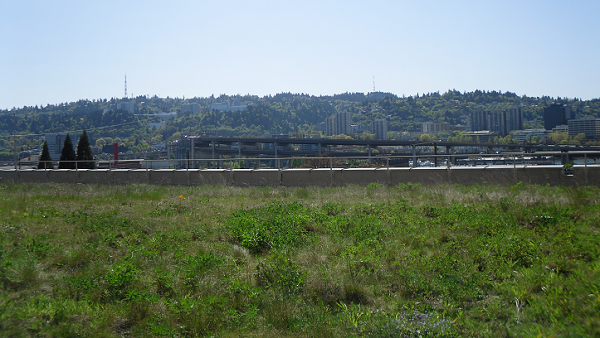
July 23, 2015, by Blue-Green team
Improving urban flood resilience by sustainable drainage retrofit
Dr Jessica Lamond (Faculty of Environment and Technology, University of the West of England) and colleagues have recently published a new paper in Proceedings of the Institution of Civil Engineers (ICE) – Urban Design and Planning. This links with Dr Lamond’s research as part of the Blue-Green Cities WP2c (Behavioral Responses of Individuals and Institutions).
They investigated whether retrofitting sustainable drainage systems (SuDS) to attenuate stormwater runoff could contribute to urban resilience as part of an integrated approach to managing extreme storms, and the subsequent implications this could have for urban planning. Climate, landuse and socio-economic changes (and projected changes in the future) suggests that cities cannot continue to rely solely on increasing the capacity of subsurface piped drainage systems (grey infrastructure) and alternative, more sustainable options should be sought. The planning community should be at the heart of this paradigm shift in urban water management.
The team conducted an extensive review of current literature to address the following research questions:
- What are the most appropriate SuDS devices for retrofit in urban areas to reduce surface water flood risk?
- What are the major constraints and considerations for urban planners in implementing retrofit?
- What are the additional benefits and opportunities for planners and designers in retrofitting SuDS?
- Do SuDS increase resilience to extreme events?
Many SuDS devices are suitable for retrofit to reduce runoff in urban areas – those most suited take up limited space and can address high-moderate runoff reduction, such as green roofs, rainwater harvesting/underground storage, rain gardens and permeable paving.
Major constraints and considerations for urban planners include practical issues such as access for installation and maintenance, ownership of buildings and urban spaces, lack of subsurface space, pollution controls, aesthetics and suitability of building types in historic districts. Making the case for SuDS retrofit can be aided by a strong benefit:cost ratio, however, there is limited cost-benefit guidance currently available for retrofit projects (favouring new development).
Additional benefits of SuDS include increased green spaces and improvements in the quality of life within urban spaces. The benefits will be location-specific and so need to be evaluated on a case by case basis. Retrofit SuDS may also help improve urban resilience by improving the capacity of populations to cope with a range of stressors, and subsequently, to better deal with extreme events such as flooding.
The paper concludes by remarking that “retrofitting of SuDS for flood control in existing cities should always be considered as part of an integrated solution comprising blue–green and grey elements as appropriate to the specific location and conditions“.
The full paper can be downloaded from the journal’s website (ICE Urban Design and Planning).
Check out the Blue-Green Cities website for more information on the project and WP2c.


[…] more attractive to live or work in– Improving ecosystem resilience to extreme weather by slowing the flow of flood water and providing habitats for wildlifeIt is no surprise then that green spaces are championed and […]